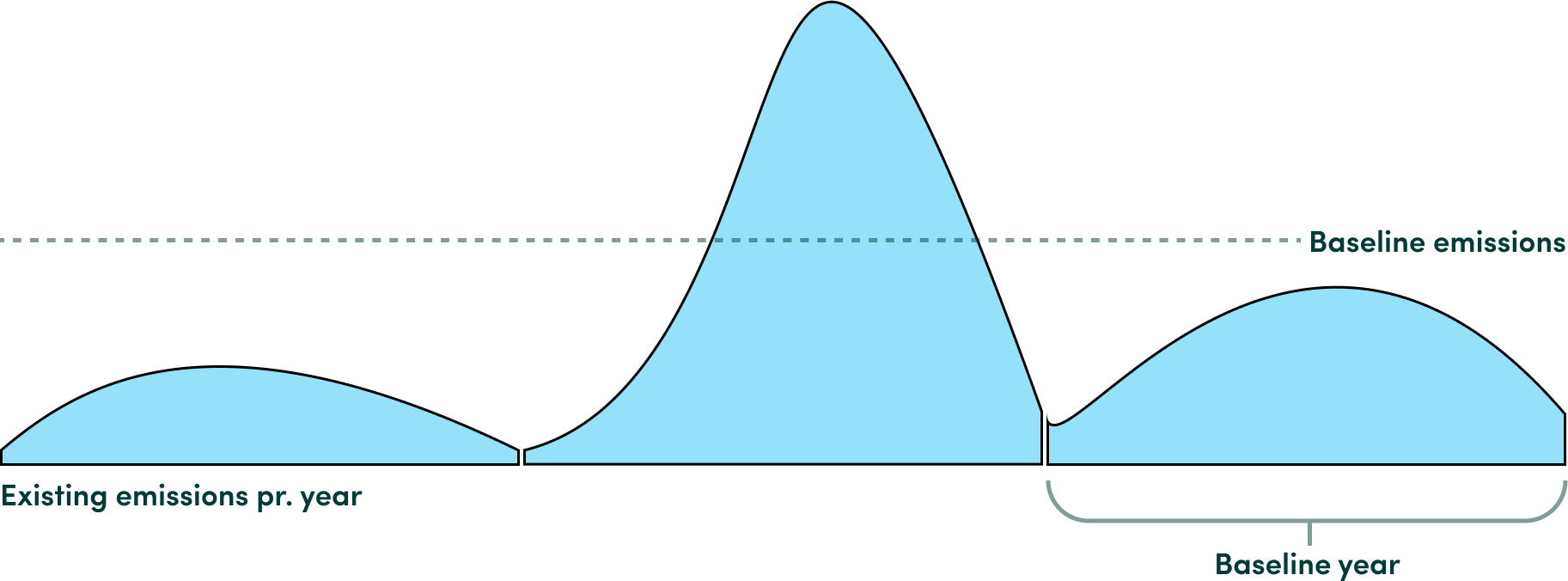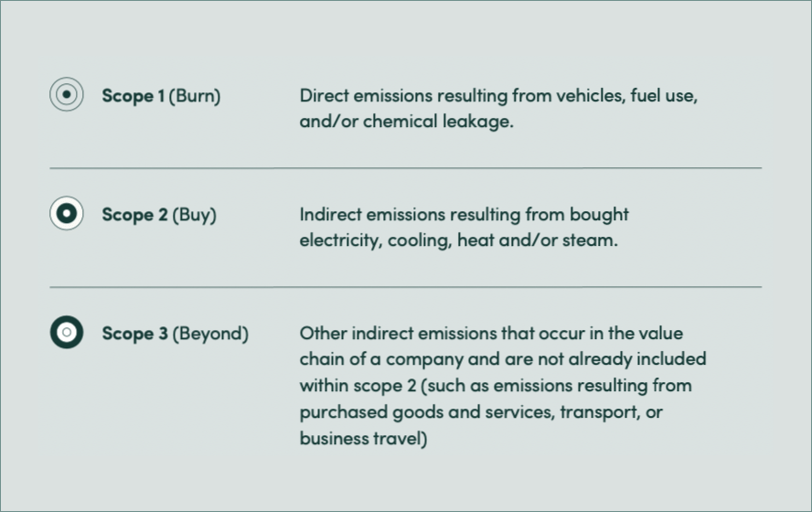It’s easy to get confused with all the terminology floating around, especially when it comes to climate change and reporting. We get it! It’s new for a lot of businesses, and if you’re not trained in this area, you’re probably wondering, what on earth is "divesting"? But you don’t need a degree in climate reporting to do your job - you just need to read on!
Additionality
"Additionality'' is a way of assessing whether a climate project is actually making a difference (for example tree-planting or investing in solar or wind) compared to a scenario where nothing would have happened. As a business, if you can prove that you’re supporting new or emerging climate initiatives, as opposed to just subsidizing what is already in place (or being planned by the government), you can claim that those new projects are "additional".

Baseline
A "baseline" is a snapshot of a business’ existing emissions and a way of benchmarking their future improvements and reductions against it. A baseline would typically be needed when you start out with your climate reporting, so that you have a way of looking back at the progress you’ve made.

Climate change mitigation
These are the tangible ways that people, businesses and governments can limit and/or reduce their impact on the climate. For example, businesses can "mitigate" or reduce their climate impact by shifting to renewable energy sources (such as solar or wind), as well as reducing how much they use to produce goods or by investing in tree-planting projects.
Climate change adaptation
"Adaptation" goes hand in hand with “mitigation”, because not only do we need to do everything we can to slow the effects of climate change, we also need to adapt to shifts in temperature, and to the natural disasters caused by climate change. Adaptation is a way of assessing the risks now and in the future, and do something about them before it’s too late. This could be, for example, changing the way buildings are built to protect against sea-level rises, or improving road surfaces to withstand hotter temperatures.
Corporate Social Responsibility (CSR)
How a company is acting in an ethical, sustainable, and socially responsible way when it comes to their business practices. The purpose of CSR is to create a balance between how much money a company makes and how much they contribute to society as a whole.
Carbon Accounting
Also known as “Greenhouse Gas (GHG) accounting”, “carbon accounting” is a way for businesses to calculate how much they emit through their operations. It is just like financial accounting, but focussed entirely on the impact a business has on the planet.
Carbon Footprint
A way of measuring how much your activities contribute to climate change. In a business sense, this would be the total amount of GHG emissions you produce across your company, from business travel to the goods you make and everything in between.
Carbon Neutral
The balance between how much carbon is being emitted and how much is being absorbed. To achieve “carbon neutrality”, which is what the EU has committed to doing by 2050, EU member states need to reduce their emissions as much as possible and offset anything remaining by investing in projects like tree-planting or renewable energy.
Carbon Insetting
Where a company invests in climate projects that are closely linked to their own supply chain. For example, a coffee company that relies on biodiversity and the health of their trees to produce coffee might invest in those areas to both reduce their emissions, but also protect the supply chain they rely on.
Carbon Offsetting
Where a business invests in ways that help them reduce or remove the GHG emissions they’ve produced through their business. One way of doing this would be, for example, through tree-planting initiatives, or investing in renewable energy.
Double Materiality
This is how a business is impacted by climate change, but also how that same business impacts the environment and society it operates in.
Decarbonization
The process of reducing and/or removing GHG emissions by opting for more sustainable energy sources, as well as finding ways to capture and store carbon long term.
Environmental, Social, Governance (ESG)
Is a set of guidelines used to measure how environmentally and socially responsible a company is across its operations and practices.
Fossil Fuel Divestment
Fossil fuel divestment: The opposite of “investment” in fossil fuels, fossil fuel divestment is where businesses or organizations decide to stop investing in companies that extract, process or distribute fossil fuels, to boost their sustainability and move away from industries that are harming the planet.
Greenwashing
Describes a false, misleading or untrue claim made by a company or organization on how their product or service is helping the environment. Examples of words that have come under the spotlight are “green”, “eco-friendly” “environmentally friendly”. Greenwashing can now carry serious legal penalties and fines if companies are found to be misleading customers with “green” claims that are not backed up by evidence.
Net Zero
Where the total amount of GHG emissions released into the atmosphere is balanced by the amount that has been reduced or removed.
Reporting Framework
This is a plan that businesses can put in place to help them track how much they're impacting the environment. Businesses can choose between a number of framework options to suit what sort of business they are, and what their goals are for reporting and reducing their emissions.
Scopes
“Scopes” are a way of organizing the different GHG emissions. They’re divided into Scopes 1, 2, and 3 so that companies can better understand where their GHG emissions come from, and do something about them.

Sustainability Reporting
Is just like financial reporting, but is focussed on assessing a business' sustainability credentials on factors such as the environment, how they impact society and the structure they have in place to govern their business, as well as climate-related risks that might impact them now or in the future.
Zero emissions
Where no GHG emissions (including CO2, methane etc) are released into the atmosphere.
